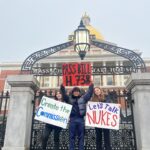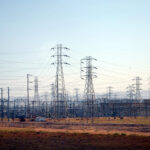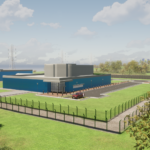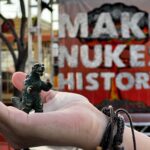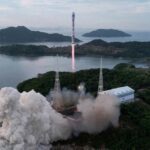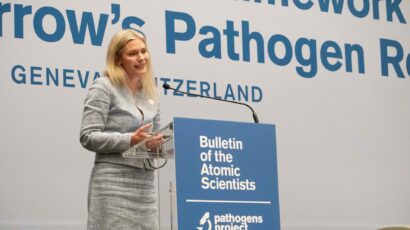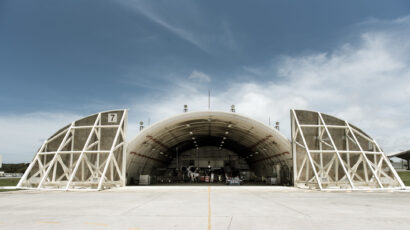North Korea: Small step forward, many more to go
By Duyeon Kim | March 1, 2012
For the first time in years, there is some welcome news out of North Korea: Washington and Pyongyang have finally struck a deal. North Korea agreed, for the time being, to issue a moratorium on uranium enrichment as well as nuclear and missile tests, which would help relieve tensions on the Korean Peninsula. Pyongyang vowed to allow International Atomic Energy Agency (IAEA) inspectors into its Yongbyon nuclear facilities to verify the anticipated uranium enrichment freeze. In turn, Washington said it would provide 240,000 metric tons of nutritional assistance, promising to meet again soon with the North Koreans to finalize administrative details for the shipments. In a rare move, both capitals then simultaneously released statements about this latest development after three rounds of talks, nearing a deal that had been interrupted by the sudden death of Kim Jong-il last year.
The deal is a positive, but small, step forward. The bureaucratic wheels are now being greased, in hopes that the six-party talks involving the countries most closely interested in the Korean peninsula can be re-opened.
But on closer inspection, it’s too soon to pop the cork on the Champagne bottle: Real progress depends on Pyongyang’s actual fulfillment of this latest agreement.
The devil is in the details. The statements released simultaneously by the US and North Korea reflect some stark contrasts, which are quite telling of each nation’s respective stances, offering clues on what to expect in future discussions and negotiations.
In its statement, the United States indicated that the return of IAEA inspectors includes confirming the disablement of a 5-megawatt nuclear reactor and related facilities that was undertaken during the six-party talks. This understanding is absent in North Korea’s statement.
In its statement, Pyongyang says that, once the six-party talks resume, priority will be given to the provision to the North of light water nuclear power reactors, a key sticking point in past negotiations. Washington’s statement is silent on this issue. The Clinton administration agreed to the construction of light water reactors, believing they are proliferation resistant. But the Bush administration adamantly refused to provide light water reactors. The Obama administration has not publicly revealed its stance.
At any resumed six-party talks, the North also believes priority will be given to lifting the economic sanctions against it. But Washington’s statement only notes, “U.S. sanctions against the DPRK (Democratic People’s Republic of Korea) are not targeted against the livelihood of the DPRK people.”
The North says Washington promised 240,000 tons of nutritional aid “with the prospect of additional food assistance.” But food aid is a controversial topic for the United States and South Korea since it’s long believed to have fed the North’s military instead of those in need. Nutritional assistance — mainly vitamin supplies and protein biscuits — however, are perceived as unattractive to soldiers and banquet tables but necessary for malnourished women and children.
In both statements, Washington’s usual prerequisite of inter-Korean dialogue and reconciliation is absent. Until now, Washington has been firm in its refusal to sideline Seoul in any negotiations with Pyongyang.
The return of the IAEA in North Korea. It’s evident that more discussions are needed, particularly in regard to details and logistics. How will North Korea halt its uranium enrichment facility? When will IAEA inspectors return to Yongbyon in relation to the timing of nutritional assistance? What is the scope and what are the physical boundaries of the IAEA’s work in Yongbyon?
South Korean media have reported that Pyongyang suggested it would be willing to temporarily halt its uranium enrichment facility using the “no-load operation” method until the plant is proved to be useful only for peaceful purposes. (The no-load method means allowing centrifuges to continue spinning, but without feeding them the uranium fuel needed for actual enrichment. This process prevents the destruction of centrifuges, implying that the regime intends to restart enrichment at a later point in time.) Until now, Washington and Seoul had demanded a complete halt in uranium enrichment activities. While the reported no-load operation may be acceptable if it leads to IAEA access, it remains to be seen whether the allies will accept this method.
There’s no doubt the IAEA needs to inspect the regime’s pilot uranium enrichment facility at Yongbyon. But IAEA involvement should not end with Yongbyon; the possibility of hidden enrichment plants remains a great concern.
What next? If successfully implemented, the latest agreement could lead to the resumption of six-party talks as early as this summer. But before that can happen, the story will probably involve a series of small steps, perhaps something like these: Robert King, the US Special Envoy for North Korean Human Rights Issues, flies to a third country for logistical talks on nutritional assistance this month (perhaps even next week); a couple of months later, the United States sends the first of its 20,000-ton-a-month shipments of nutritional aid; upon receipt, the North begins taking steps to freeze its uranium enrichment activity and works with Washington on the timing of IAEA inspectors’ return to Yongbyon.
Phasing in nutritional aid would motivate Pyongyang to fulfill its commitments — a tit-for-tat (or in the vernacular of six-party negotiations “action for action”) approach that has been the cornerstone of the six-party talks. Even if all goes well, then, a substantial amount of time will be needed before six-way negotiations can resume.
Once all parties sit back down at the six-way bargaining table, a long and tough road awaits: verifying past reactor-disablement measures and uranium-enrichment activities, dealing with non-nuclear issues of mutual concern, and eventually wading into uncharted waters for even farther-reaching commitments that lead to the final dismantlement phase agreed upon in past six-party accords.
Washington and Seoul face a dilemma: How demanding or how flexible should they be for the sake of bringing Pyongyang back to the six-way dialogue table? Until now, the allies have been firm in their demands. But both countries face presidential elections at the end of this year, and there are South Korean parliamentary elections in April. The two nations may have political incentives for even the smallest victory in North Korea. Progress in US-North Korea talks would also need to be well-coordinated with progress in inter-Korean relations if the Obama administration continues to stick to this policy.
It’s high time we see and use words like “progress” and “breakthrough” while discussing North Korea. But a true breakthrough will only come after Pyongyang completely and verifiably fulfills its end of the nuclear bargain.
Together, we make the world safer.
The Bulletin elevates expert voices above the noise. But as an independent nonprofit organization, our operations depend on the support of readers like you. Help us continue to deliver quality journalism that holds leaders accountable. Your support of our work at any level is important. In return, we promise our coverage will be understandable, influential, vigilant, solution-oriented, and fair-minded. Together we can make a difference.
Topics: Nuclear Energy, Opinion



